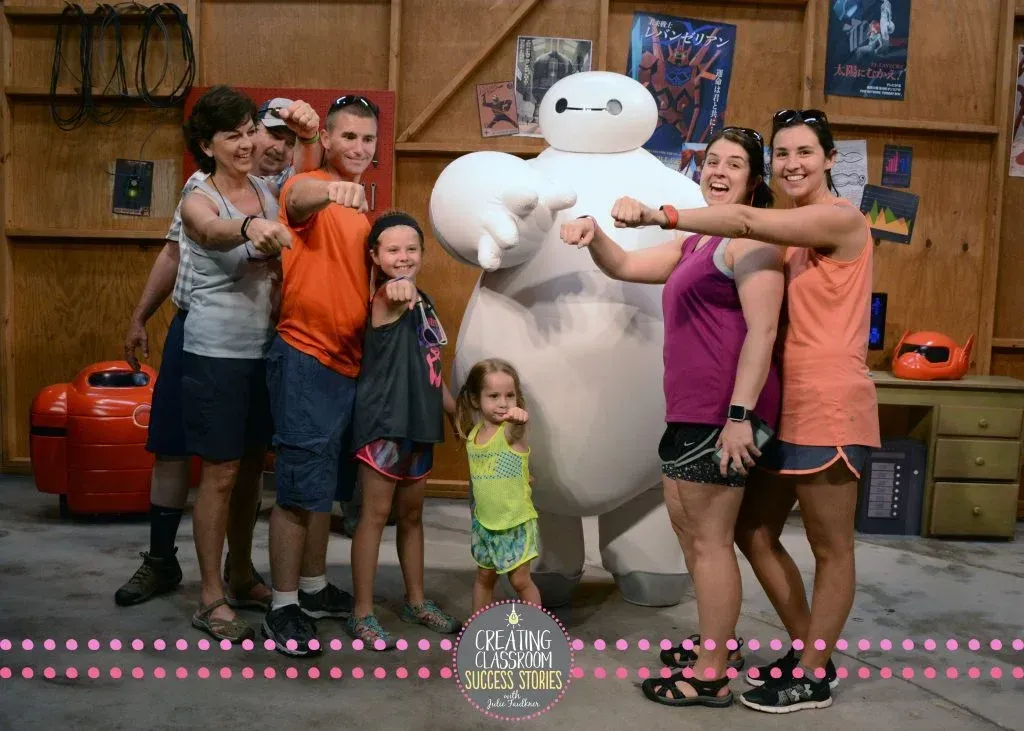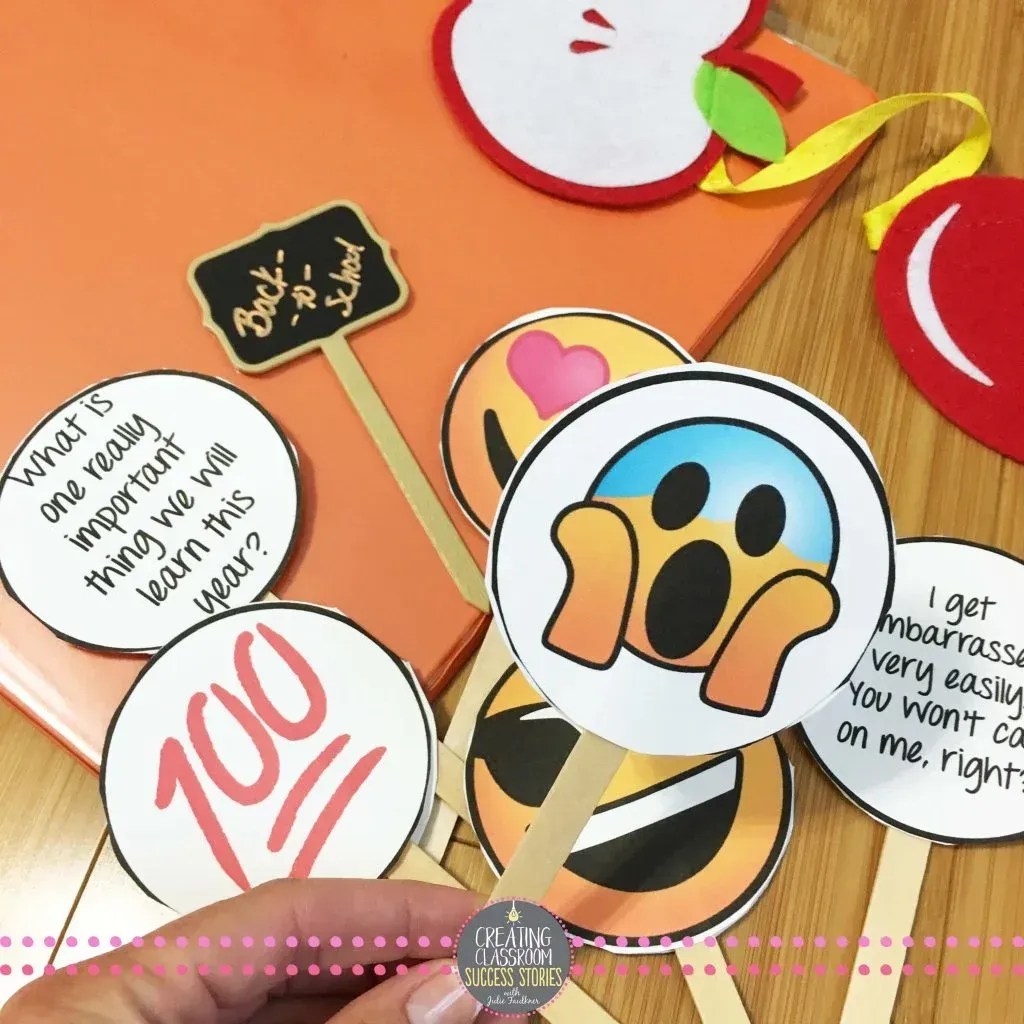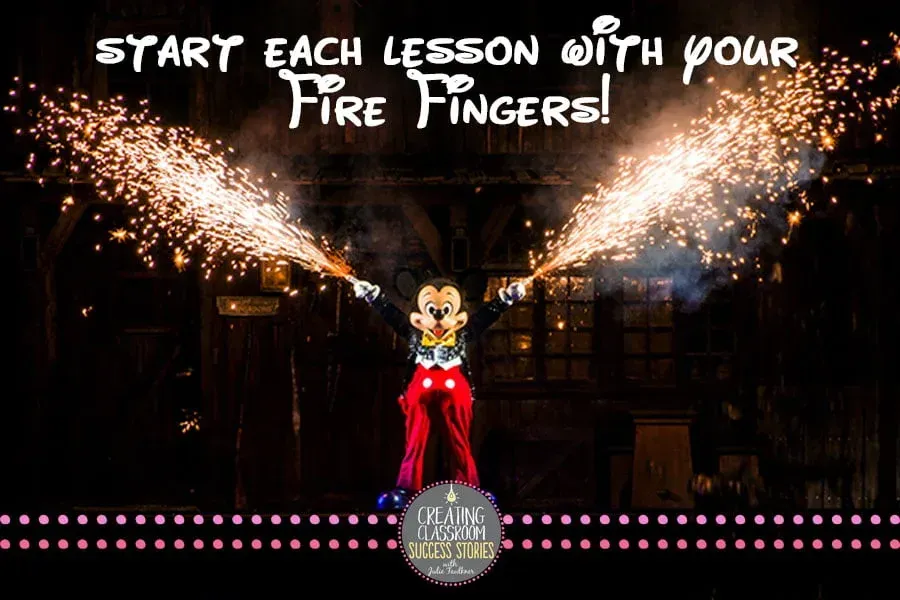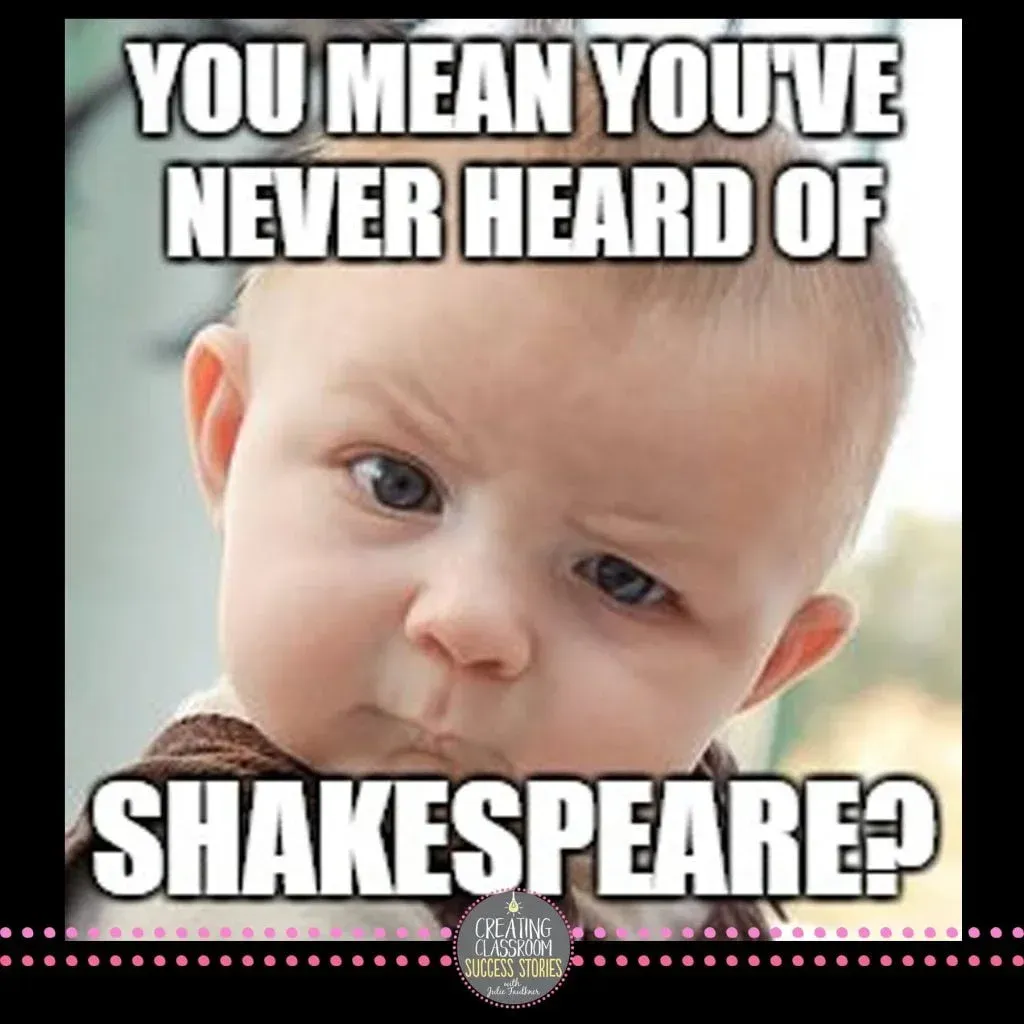What I Learned About Teaching from
My Summer Vacation at Disney World
My family and I traveled to Disney World several years ago, and I hadn’t been there even half a day before I started feeling inspired. For me, school is pretty much always on my brain, so it’s not surprising that it came to mind even when I was on vacation! But, truthfully, there is so much going on at Disney that I couldn’t help but learn from the best while enjoying my time at the happiest place on earth. Many of these things that I noticed at Disney reaffirmed what I’ve done in my classroom for years, but it’s nice to review, revisit, and recap. Here’s what I learned about teaching from my summer vacation at Disneyworld.
1. YOU CAN HAVE A HAPPY PLACE AND STILL HAVE RULES
Disney is known for being “the happiest place on earth.” How is it possible, then, that the happiest place has rules? Oh, they do. They want you to move left, stay inside the tape, stand in straight lines, keep your hands and feet inside, etc. Why do they do this? So people are safe and get to do ALL. THE. THINGS they came to do. In turn – happiness. They aren’t unreasonable rules and requests at all. However, don’t most of our students – and maybe even the public – think that rules are just for fuddy-duddies who want to put a damper on all the fun? I, for one, believe in establishing rules up front so it’s clear what the expectations are. I don’t like to make rules that are arbitrary or just have a bunch of rules just for the sake of having rules, but there must be a set of guidelines. In my classroom, I typically select 3-5 overarching rules that serve as my classroom expectations – and that are good rules to live by as well. Too many rules and all you’ll be doing is enforcing rules, but if you don’t have some rules to control the chaos, the chaos will control you.
I’ve had the following three rules hanging in my classroom for 10 years now:
Mrs. Faulkner Rule #1: Own it and stay in your lane.
Mrs. Faulkner Rule #2: Be aware of your surroundings.
Mrs. Faulkner Rule #3: Make a way, not an excuse.
You might notice I don’t have rules about gum, food, phones, etc. Now, I do talk about these specific items on the first day. Check out my fun Classroom Rules Emoji Puppets for doing just that! I’ve learned if students are following those governing guidelines above and if I’m doing my job of actively teaching and facilitating each period, we can have a successful and happy place. Be consistent with enforcing the rules.
2. SCHEDULES, PLANS, ROUTINES, & STRUCTURE ARE NECESSARY FOR THINGS TO RUN SMOOTHLY, FOR THINGS TO GET DONE, & FOR EVERYONE TO FEEL GOOD ABOUT IT
Disney has everything planned down to the minute, and there is very, very little interruption to the plan. If you think about how much they have going on to make the parks the happiest places on earth, it’s critical to establish and maintain routines. They have a plan for shows, parades, buses, rides, fast passes, rain delays, and more. They even publish specifically when and where the characters will appear. Now think about how much we have going on in the classroom: attendance, lunch count, signing field trip forms, turning in lesson plans, differentiating, signing devices on the wi-fi, providing make-up work, collecting homework, passing out tasks, assigning groups, managing behavior, teaching, collecting work, grading work, giving feedback, counseling, scheduling conferences, RTI, passing out a Band-aid, and on and on. Imagine if there were no plan for how to take attendance or how to pass out papers, etc. It would be chaos, kids would know you had no plan, and you wouldn’t get anything done.
I am probably an over-planner or over-scheduler, but I do have a plan for every minute of my class period, every day of the week, and even an extended plan for the month. I have routines for turning in papers, passing out papers, getting in groups, and so forth and so on. Now, no plan, routine, or schedule is any good if no one knows what it is. That’s why Disney publishes pamphlets each day and even has an app. During the first few days of school, I talk about my classroom routines and schedules. We even practice, so they know what to expect. Some may argue that it takes up precious time at the beginning of the year, but it SAVES so much time later on. Plus, I just work them into what we are doing so that it feels natural. Each week I write the daily schedule on the board, and each day, I go over the daily plan with students before we start the lesson. We are all on the same page that way and can get moving.
3. KINDNESS AND SMILES MATTER
There are so many opinions about whether or not to smile at students right away or be overly kind to them. I would even say that my own opinion here has evolved over the years. The people who work at Disney wear a smile as part of their uniform – and maybe they are just genuinely happy to be there. I mean, if I were a Disney princess instead of a high school English teacher, then maybe I’d be all smiles all the time, too. But I did choose to be a teacher – I want to be there. So why wouldn’t I let my kids know that with a smile? Can you be kind and smile AND maintain a professional image and relationship with students? Absolutely – yes. I am 100% not my students’ friend – not in any way, shape, form, or fashion. That doesn’t mean, though, that I can’t – or won’t – be kind to them. That also doesn’t mean that I have no classroom management either or that I’m crossing any lines or that I’m not stern or won’t correct them. Believe me, I have plenty of lines drawn. (Read more about my philosophy on classroom management here.)
Kids of all ages crave kindness, and for the 90 minutes that I have each day, I need to find ways to show kindness. Circling back to the idea of really wanting to be there – I do, and I like to see kids learning and hear what they have to say. That makes me smile. They make me smile. So, from the first day of school to the last, I greet them at the door and smile. I say please, thank you, and great job, and I really mean it. Smiles are contagious – give one and get one!
4. HAVE A GRAND FINALE, BUT ALSO START WITH THE FIRE FINGERS
The best closing show at Disney this year, in my opinion, was the Fantasmic Show at Hollywood Studios. I loved all the closing and opening shows at all the parks because Disney doesn’t ever do anything halfway, but the HS park show had several things that really spoke to me in terms of back-to-school. If you’ve seen the show, you know that it opens with lights and music – it’s the best and biggest lead at any of the shows, and so you are expecting something really, really great. Then up from a mountain on a stage far, far away pops up a teeny, tiny Mickey. Granted, it was a live Mickey and not a projection or puppet, but he was so, so small. I guess I was just expecting more. Then several minutes of almost nothing goes by and out of nowhere, he starts to dance and shoot fire from his fingertips!! That is a new level of spirit fingers, folks! Immediately, I was in.
Why didn’t they start with that? Why didn’t they start with the fire fingers? The lead-in was good and it got me interested, but then it was a huge let-down – until minutes later when Mickey whipped out those fire fingers. When I think about applying this experience to my classroom this year, I reaffirmed that I must start and end the lesson with something great to get my students’ attention. It certainly won’t be fire fingers every time – or ever LOL! – but it needs to be relevant to activate their learning and draw them in – and keep them in – before I lose them. The law of primacy and recency says you remember the best whatever is at the beginning and end. I’ll carefully plan bell ringers this year and exit tickets with specific purposes and pizazz so they aren’t just a waste of time or means to an end or a way to check a box. For me, that will look like carefully chosen daily grammar practice because my junior and seniors have ACT on the brain. For the yearbook, it will be inspirational photos and team-building tasks. To end, I’ll be sure to have students review the lesson and make their own connections. The beginning and end really do matter and make meaning. Every day won’t be “on fire” – that’s just going to be a reality – but this reminded me I do need to bring it to the best of my ability day in and day out.
5. KEEP THE FOCUS AND PURPOSE IN MIND
went to Disney with my family and two nieces – nine and three at the time. The girls are super familiar with most Disney characters, and for those we knew they weren’t interested in, we didn’t spend much time at. But there was one show we went to and about halfway through, my three-year-old niece asked, “Who is that?” We all knew who it was and hadn’t even thought that she might not know. At that moment I realized that might be how our students feel when we present new material to them. Sometimes we take for granted they know it. Because I have a very tight schedule, I can’t afford to spend time teaching material they already know, but I also can’t afford for them to be lost and have to rush and make it up later. So, at the beginning of the year, I always give a pre-test of 100 words that every high school English student should know. These are words from the CCSS, standardized testing words, and other words that are specific to English. Also, it’s really important to share with students the purpose of the lesson or activity for the day. They need to know why they are learning it and how it connects with the larger purpose. I usually explain it so explicitly to them so that they could tell anyone who comes into the class period to observe or anyone they talk to after class.
At the end of the day, Disney is in the business of making dreams come true. But we teachers are, too. In fact, the biggest of dreams are in our hands. What an honor and privilege to have that role in someone’s life. As I prepare for back-to-school this year, I want to make as much magic in my classroom each and every day that I possibly can. Here’s to a “Soarin’” kinda year, and not a “Hollywood Tower of Terror” kinda one!
Share with me in the comments how you prepare for back-to-school.
Love this content?
Sign up for my email newsletter with more tips, ideas, success stories, and freebies!





















